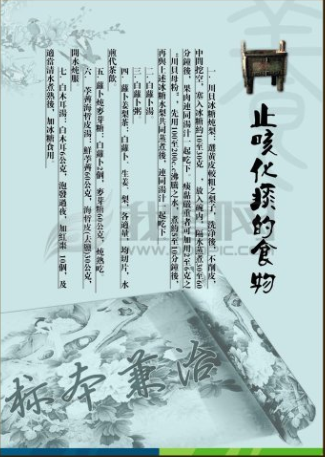The Nomenclature
The names of the eight extraordinary vessels are dumai (the governor vessel), renmai (the conception vessel), chongmai (the thoroughfare vessel), daimai (the belt vessel), yinqiao (the yin-heel vessel), yangqiao (the yang-heel vessel), yinwei (the yin-link vessel) and yang-wei (the yang-link vessel).
The eight extraordinary vessels are different from the twelve regular meridians. Compared with the twelve regular meridians, the eight extraordinary vessels are characterized by no regular distribution, no direct connection with the viscera and no internal and external relationship between each other.
The Running Features of the Eight Extraordinary Vessels
The eight extraordinary vessels are different from the twelve regular meridians in running routes and functions.
The Thoroughfare vessel, the conception vessel and the governor vessel are "three separate vessels that originate from the same source
The thoroughfare vessel, the conception vessel and the governor vessel all start from the lower abdomen (the uterus for women) and run downward to the perineum where they begin to run in the different directions. The trunk of the governor vessel runs posteriorly from the perineum, penetrates the spine, moves upward to the forehead from the neck and midline of the head and then runs downward from the nose to the labial frenum.
The branches of the governor vessel are connected with the kidney and the brain. The conception vessel runs forward from the perineum, moves upward from the pubic region, the abdomen, the midline on the chest, the throat and the mandible to the mouth where it runs around the lips and then upward in lines to the region below the eye socket from the cheeks.
The trunk of the thoroughfare vessel runs from the perineum to qijie (pathway of qi) where it runs parallel to the foot-shaoyin meridian upward beside the navel, dispersing in the chest, moving upward around the lips and below the region of the eye socket. One of the branch of the thoroughfare vessel runs downward along the medial side of the thigh to the foot. The other branch stems from the abdomen, is connected with the governor vessel from the posterior region and runs upward in the spine.
The governor vessel, known as "the sea of the yang meridians", governs all the yang meridians in the body. The conception vessel, known as "the sea of the yin meridians", governs all the yin meridians in the body. The thoroughfare vessel, known as "the sea of blood" and "the sea of the twelve meridians", is the place where all qi and blood in the body converge on the one hand and regulates qi and blood in the twelve meridians on the other. Since all these three vessels start from the uterus in women, they are closely related to the physiological activities of women.
The belt vessel runs transversely around the body and controls all the other meridians and vessel
The belt vessel is the only one that runs transversely around the body. It starts from the hypochondria, runs obliquely downward to the lower abdomen and then transversely around the body like a belt. That is why it can control qi and blood in the other meridians and vessels.
The link vessels and heel vessels contact with qi and blood in the twelve meridians.
The yin-link vessel starts from the medial side of the shank, runs upward along the medial side of the lower limbs and, across the abdomen, the chest and the throat, connects with the conception vessel; the yang-link vessel starts from below the external ankle, runs upward along the lateral side of the lower limb and, across the lateral side of the head and the nape, connects with the governor vessel. These two vessels run across the twelve meridians and connect with the twelve meridians.

The yin-link vessel is connected with all the yin meridians while the yang-link vessel is connected with all the yang meridians. The yin-heel vessel starts from below the internal ankle and the yang-heel vessel starts from below the external ankle. They run upward along the medial side and lateral side of the lower limbs respectively to the inner canthus of the eyes where they converge with each other and combine with the hand-taiyang and the foot-taiyang meridians. So these two vessels are mainly responsible for the movement of the eyes and the lower limbs.
Appendix: The twelve branches of the meridians, the twelve tendons, the twelve skin divisions, the fifteen divergent collaterals, the floating collaterals and the minute collaterals:
Twelve Branches of Meridians
They stem from the twelve regular meridians, also pertaining to the twelve regular meridians. They all stem from the twelve regular meridians on the four limbs, then entering the cavity of the body and the viscera, eventually emerging from the surface of the, body, running upward to the head where the yin branches converge with the branches of the yang meridians that are in external and internal relationships with the meridians from which they stem, finally returning to the yang meridians they pertain to.
The Twelve Tendons:
They refer to the muscular system that are connected with the twelve meridians.
The twelve Skin Divisions:
They refer to the twelve skin areas divided according to the twelve meridians.
The Fifteen Divergent Collaterals:
The fifteen collaterals include twelve collaterals of the twelve meridians (one for each of the twelve meridians respectively), the collateral of the governor vessel, the collateral of the conception vessel and the major collateral of the spleen.
The Floating Collaterals:
They refer to the superficial collaterals.
The Minute Collaterals:
They refer to the smallest collaterals in the collateral system, similizing as "grandson-collateral" in TCM.







